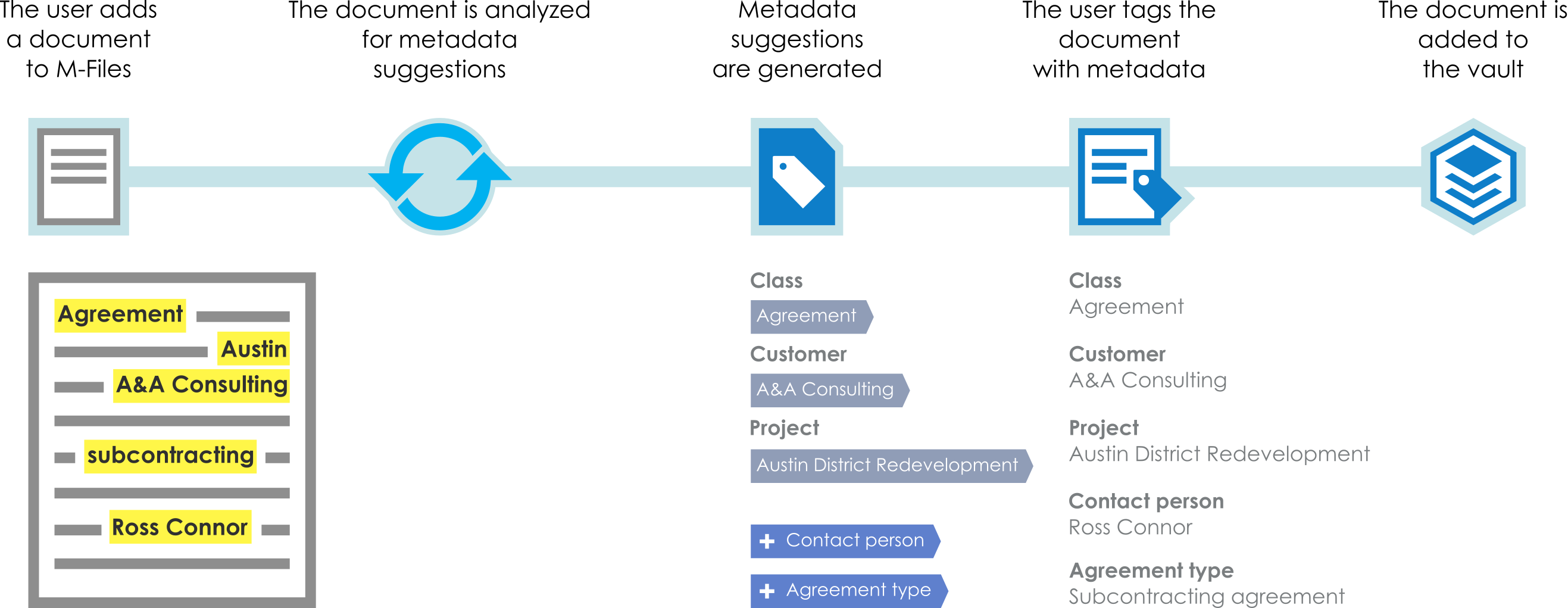Intelligence Services
Intelligence services are vault applications that are designed to analyze and classify documents and offer metadata suggestions based on file contents, existing metadata, and even user behavior. Intelligence services make use of technologies such as text analytics and machine learning to define and maintain document metadata for the user.
Intelligence services can operate in many ways and come into play in different situations. They can be tailor-made for M-Files, they can take advantage of a third-party component or an API, or connect to a third-party service to perform content analysis for M-Files.
Intelligence services are at work in the background, for example, when the user drags and drops a new document to M-Files or modifies a specific property value on the metadata card. In such instances, intelligence services analyze the contents of new documents and metadata modifications and offer metadata suggestions based on the analyses that they conduct.
If you for instance add a contract to M-Files, the intelligence service may automatically suggest contract to be used as the document class and propose values for customer and contact details, among other metadata fields, by deducing the information from the file contents. Users may then add suggested values as they see fit. This type of automation can significantly speed up the process of adding metadata for M-Files objects.
As another example, when an image is added to M-Files, an intelligence service can conduct a visual analysis on the new image before the user fills in the metadata. The analysis identifies individual objects, concepts and human faces as well as facial features in the image and generates a textual description and subject labels of the image contents. The description and labels are in turn offered as metadata suggestions for the description and keywords fields on the metadata card. The user can then add any suggestions that she deems appropriate as metadata values and optionally edit the added values to further specify the metadata.

